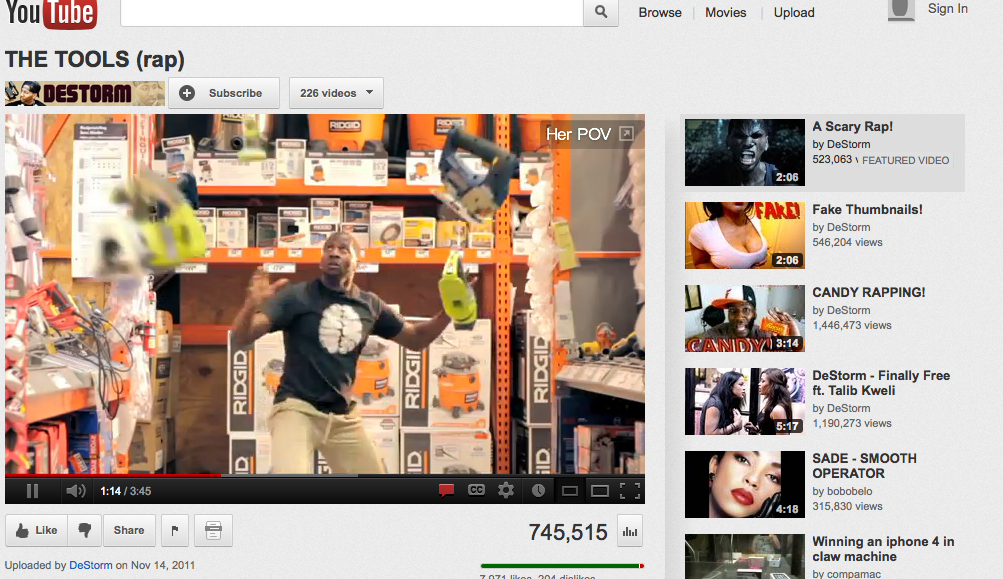
YouTube has long been tagged as the home of the skateboarding dog video. But it’s starting to grow up, with an ambitious channel strategy and a cottage industry of production companies.
Big Frame, an online media company and talent management firm, is one of them. It has signed up a passel of YouTube stars like MysteryGuitarman (who has 2 million subscribers who have watched his videos 325 million times) and DeStorm (1.2 million subscribers, 175 million views) to deals to create custom video content for clients like Home Depot, Tide and BBC America.
The company is the new media intermediary between talent and brand, helping one become a star and the other to tap into the YouTube cultural phenomenon.
“The next big piece of the puzzle that we need to deliver on the content side is these programming packages that make sense for advertisers, that feel comfortable to them, to take advantages that make it safe,” said Steve Raymond, CEO of Big Frame.
YouTube seems to be moving in that direction. While digestible, snackable content is what arguably drives content, in order for YouTube to get even close to the TV dollars, it needs to have content that people will consume for extended periods of time. Hence, the NewFronts from a few months ago. Basically, YouTube is working with content partners to incentivize people to look at YouTube as a program. With longer form and short-form content, it would appear the world is YouTube’s (and its advertising partner’s) oyster.
“When you’re talking about 5 billion streams a day around the world, there’s a big opportunity for brands to reach customers in better ways,” Raymond said.
But brands have a stake in this too, especially on the content side. With so much time being spent on the site, it’s foolish for a brand not be a part of the ecosystem. But, according to Raymond, media companies and brands need to try to understand the ad units YouTube is using.
“I don’t think a lot of people on my side are factoring that in,” Raymond said. “It’s a transformative way to buy media, a pay per view on auction. It doesn’t feel similar to the way TV is sold, but it’s what worked in search. You don’t pay a customer you show an ad to, just to those who act on it. So you spend more per view, so the economics for YouTube, if you get it right, are much better than traditional media.”
Image via Shutterstock
More in Media

Publishers revamp their newsletter offerings to engage audiences amid threat of AI and declining referral traffic
Publishers like Axios, Eater, the Guardian, theSkimm and Snopes are either growing or revamping their newsletter offerings to engage audiences as a wave of generative AI advancements increases the need for original content and referral traffic declines push publishers to find alternative ways to reach readers.

The Guardian US is starting its pursuit of political ad dollars
The Guardian US is entering the race for political ad dollars.

How much is Possible’s future in Michael Kassan’s hands?
Some people in the know at Possible said they see the conference taking a bite out of Cannes’ attendance, most acutely by U.S.-based marketers who could save money by staying on this side of the Atlantic.





